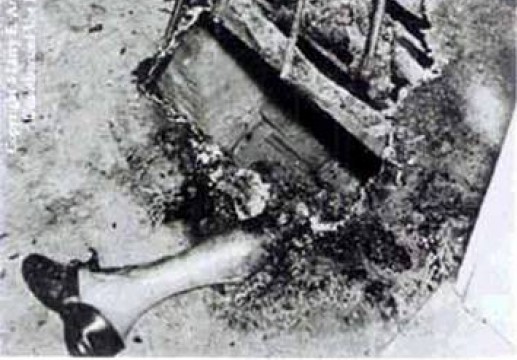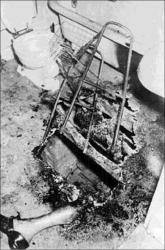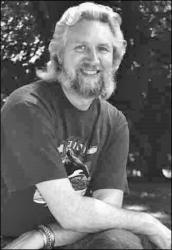Another Anniversary Passes, but Bentley Mystery Remains

What happened to Dr. Bentley?
The Endeavor News

Another anniversary quietly passed without any definitive answers to the puzzling question: what happened to Coudersport’s Dr. J. Irving Bentley.
 Respected scientists and many other researchers who have studied the case offer theories, but no answers. Because some of the circumstances about Dr. Bentley’s death defy logic, his death on Dec. 5, 1966, is often cited as an example of the phenomenon known as “spontaneous human combustion” (SHC).
Respected scientists and many other researchers who have studied the case offer theories, but no answers. Because some of the circumstances about Dr. Bentley’s death defy logic, his death on Dec. 5, 1966, is often cited as an example of the phenomenon known as “spontaneous human combustion” (SHC).
Publications as diverse as Discover Magazine and UFO Times have reported on the incident, as has ABC-TV’s “That’s Incredible” program and several cable networks.
“The truth is that we simply don’t know,” said Ernest O. Mosch Jr. of Coudersport, who has studied the case for more than four decades. “There is always a lot of skepticism that something supernatural could happen in our own back yard but, truthfully, I think that’s what happened in Coudersport.”

Bentley was a family doctor from 1925 to 1953. A hip fracture in 1947 hampered his mobility, and after his retirement Bentley led a quiet life at his two-story structure, located just a block north of Coudersport’s post office.
Dec. 5, 1966, was a typical day, with temperatures dipping toward the freezing mark, as North Penn Gas Company meter man Don Gosnell began his morning rounds. As he had done dozens of times before, Gosnell let himself into the Bentley home at about 9 am and proceeded to the basement to read the meter.
He noticed a pile of ashes as well as a hole in the ceiling, circled by glowing embers. Perplexed, Gosnell called out for the 92-year-old Dr. Bentley and made his way through the home. A bluish-gray smoke was evident and Gosnell detected an odor he described as “sickly, sweetish.”
As he progressed to the bathroom, he encountered a scene of horror and intrigue. A brown, but not charred, lower leg joint and slipper-clad foot rested next to a hole, about 2’ by 4’, burned through the linoleumcovered foot.
Dr. Bentley’s walker was tipped against the bathtub, in which the victim’s partially burned bathrobe could be seen. No other parts of Dr. Bentley’s body were visible.
Gosnell ran to the North Penn Gas office, just a block away, to alert his co-workers. The local fire department was summoned, as were Potter County Deputy Coroner John Dec and a local mortician, Dick Lindhome.

This was not a typical fire scene. If a human body could erupt into
flames, why didn’t the rest of the house ignite? Such complete disintegration of a body normally requires temperatures of more than 2,500 degrees Fahrenheit and several hours. Even with that, bone segments must be pulverized. Witnesses confirm that there was little remaining of Dr. Bentley’s body, with the exception of the lower leg and ashes.
Paint on the adjacent bathtub was blackened, but not blistered. Even more bizarre was the fact that the rubber tips of Dr. Bentley’s walker did not melt, even though it was positioned directly over his burning body.
And how did the fire start in the first place? Skeptics of SHC point to the speculative, albeit brief, report of Deputy Coroner Dec, now deceased:
“Looks like Doc Bentley was smoking his pipe, the pipe toppled over and spilled over the tobacco and, in the meantime, he fell asleep. When he woke up, he was on fire, because some of the flannel night shirt pieces fell on the floor as he went to the bathroom.”
Bentley was a frequent smoker and his acquaintances confirmed that there were burn marks on some of his garments from previous accidents.
Those who suspect SHC as a cause point out that clothing, when ignited, does not burn for long and could not possibly generate the amount of heat required to consume a human body.

Forensic analyst John F. Fischer and technical writer Joe Nickell studied the Bentley case for a story they authored in The Skeptical Inquirer. They said the fact Dr. Bentley shed his robe suggests an external, rather than internal, source of combustion.
The pair also wrote that materials under a human body (such as a floor) that is exposed to fire could help retain melted fat that flows from the body, allowing the fat to volatize, burn, and in turn yield more liquefied fat.
Another researcher, Larry Arnold, has advanced a “geo-magnetic flux” theory. Based on readings of the earth’s magnetic forces, there was a peak in magnetic activities on Dec. 4-5, 1966, which in his opinion could cause supernatural occurrences such as SHC.
An even more bizarre explanation appeared in the writings of historian and folklorist Robert Lyman, who studied and reported on dozens of unusual phenomena in Potter County. At the time of the incident, Lyman observed, there was an unusually large number of unidentified flying object sightings in the region, coinciding with invisible energy lines that may have been emitting particularly strong power. Could a form of “lightning” have struck Dr. Bentley, causing the intense heat that reduced his body to ashes?
Potter County lost a venerable doctor, a man who had brought hundreds of people into the world, on Dec. 5, 1966, but it gained a mystery — one that will continue to perplex anyone who ponders the strange demise of Dr. John Irving Bentley.
Read this great story and many others in this week’s edition of the Endeavor News.

I cant seem to find an address as to where this took place… any ideas?
Hi Mikey,
I’m quite sure it was on North Main Street in Coudersport. I could perhaps find the exact address with a bit of digging.
If I do I’ll post it back here.
sounds good thanks!
My father, Dr. William L. Mitchell, was one of the people at the scene that day in 1966. He was coming home from a farm call, and saw all the vehicles in front of Dr. Bentley’s home. He parked and went in to see if he could assist. I believe he helped Johnny Dec put the remains in a bag. My mother said when he came home, he smelled “funny” — and not like he’d been in a cow barn at all.
Hey that is some great info. Essie.
Do you by any chance know the address of the Doctor’s home? I have not been able to figure out which house it was here in town.
I’m quite intrigued by it actually 🙂
By the way, a special thanks to the Endeavor News for permission to re-print this article!
A great newspaper with excellent articles!
The former Bentley home is one block north of the Coudersport Post Office, which is located at 301 North Main Street. The home has been converted to apartments, and is in the middle of that block of four homes, all fronting on Main Street.
It’s 403 North Main Street.
Great work Essie! Thanks 🙂